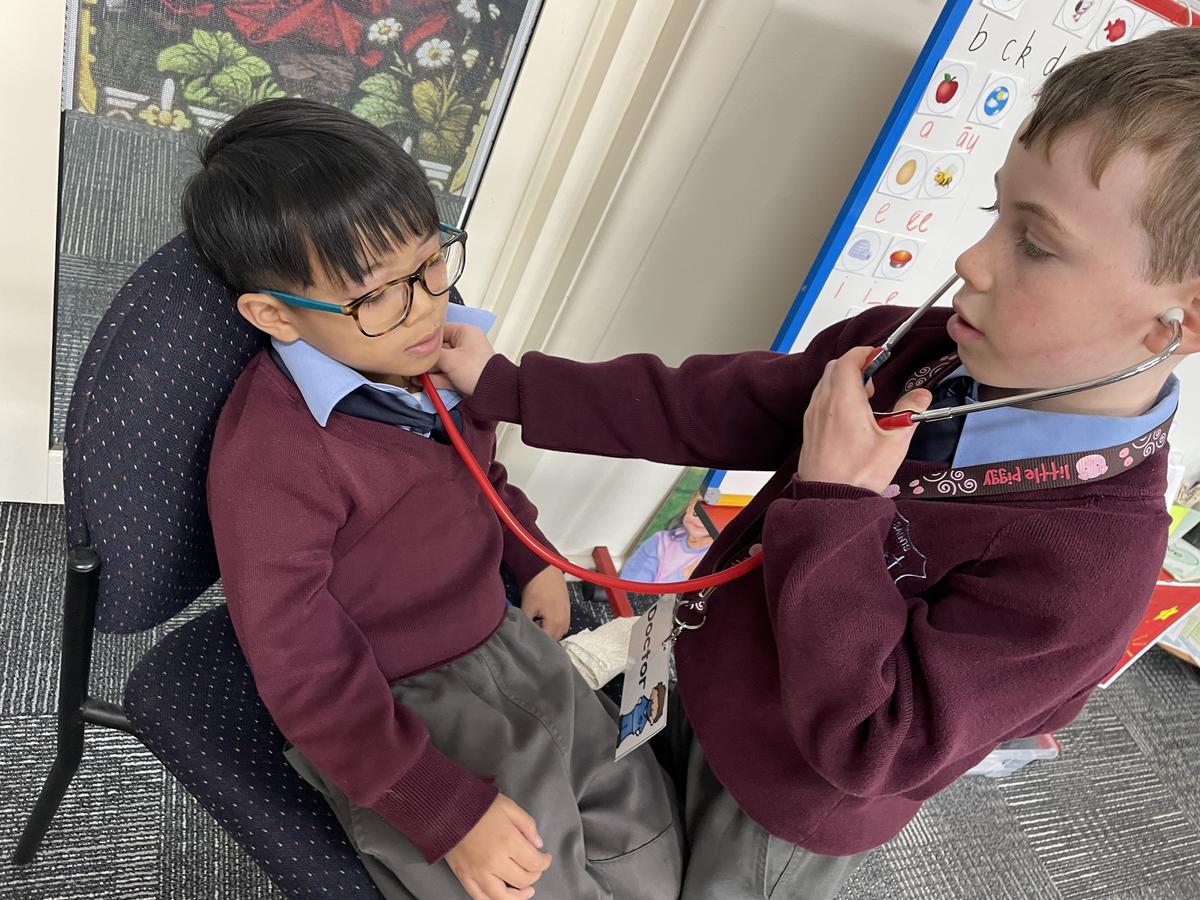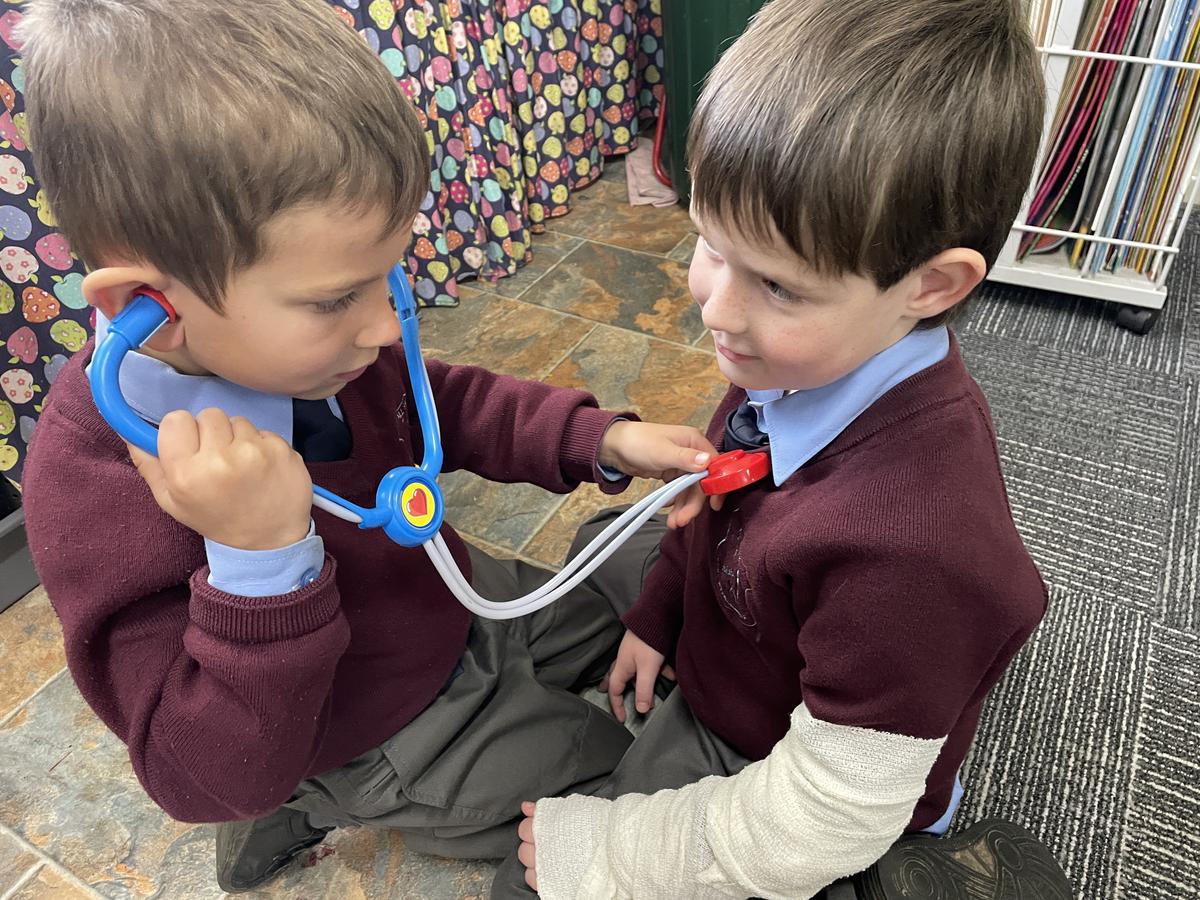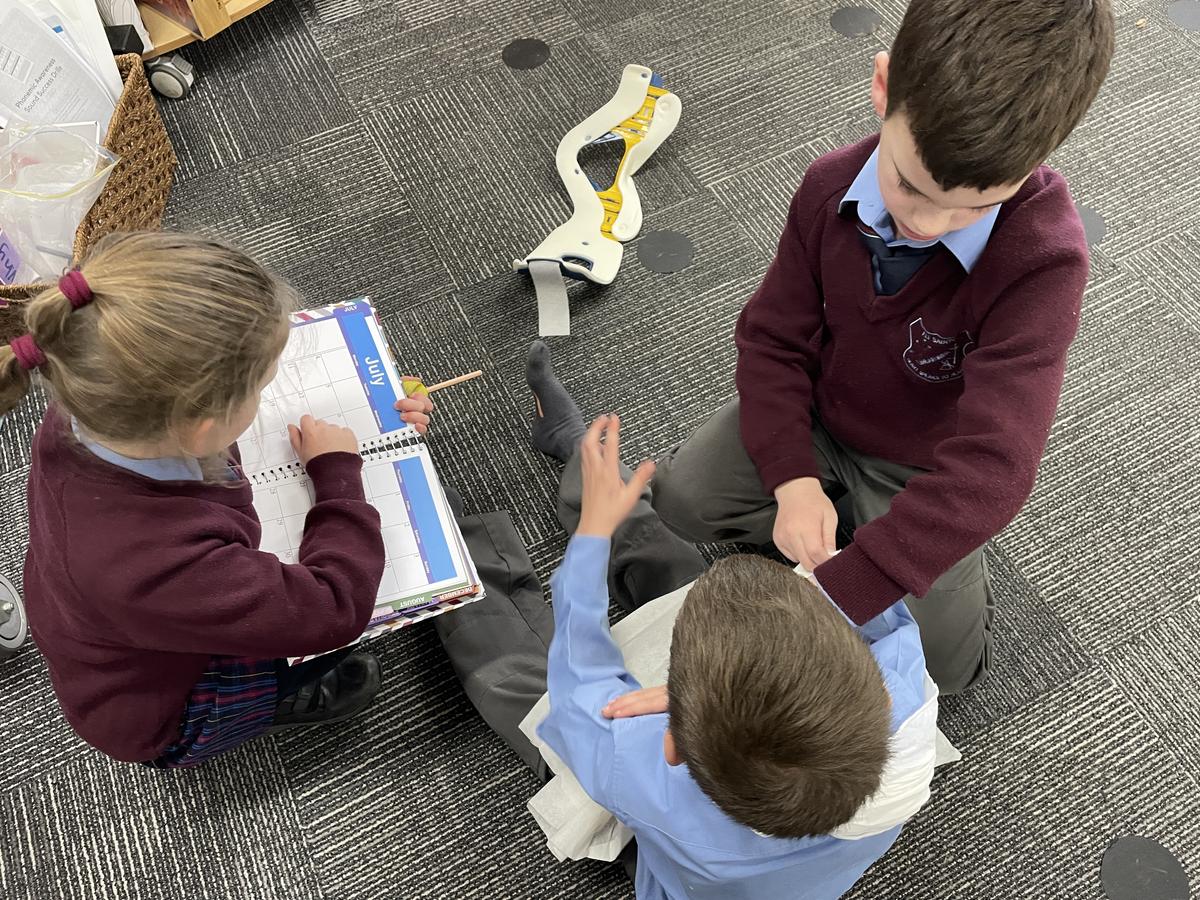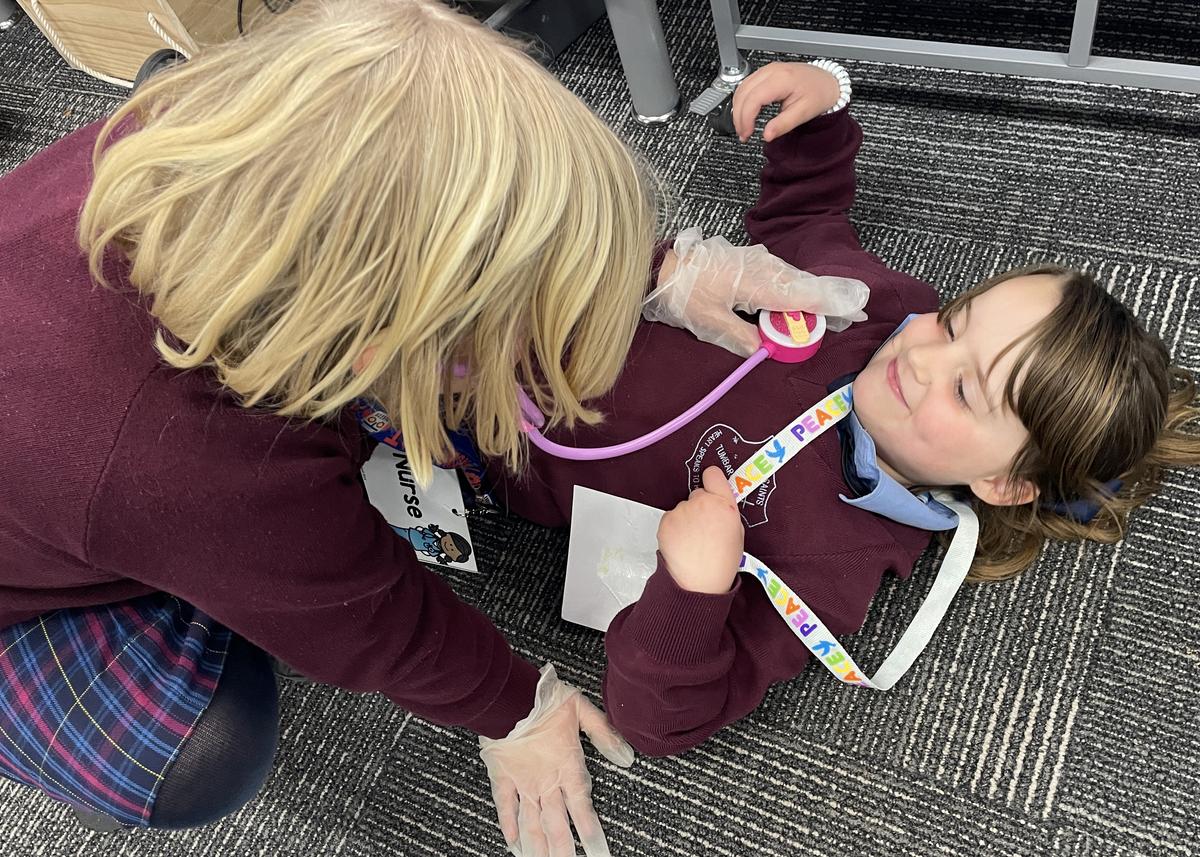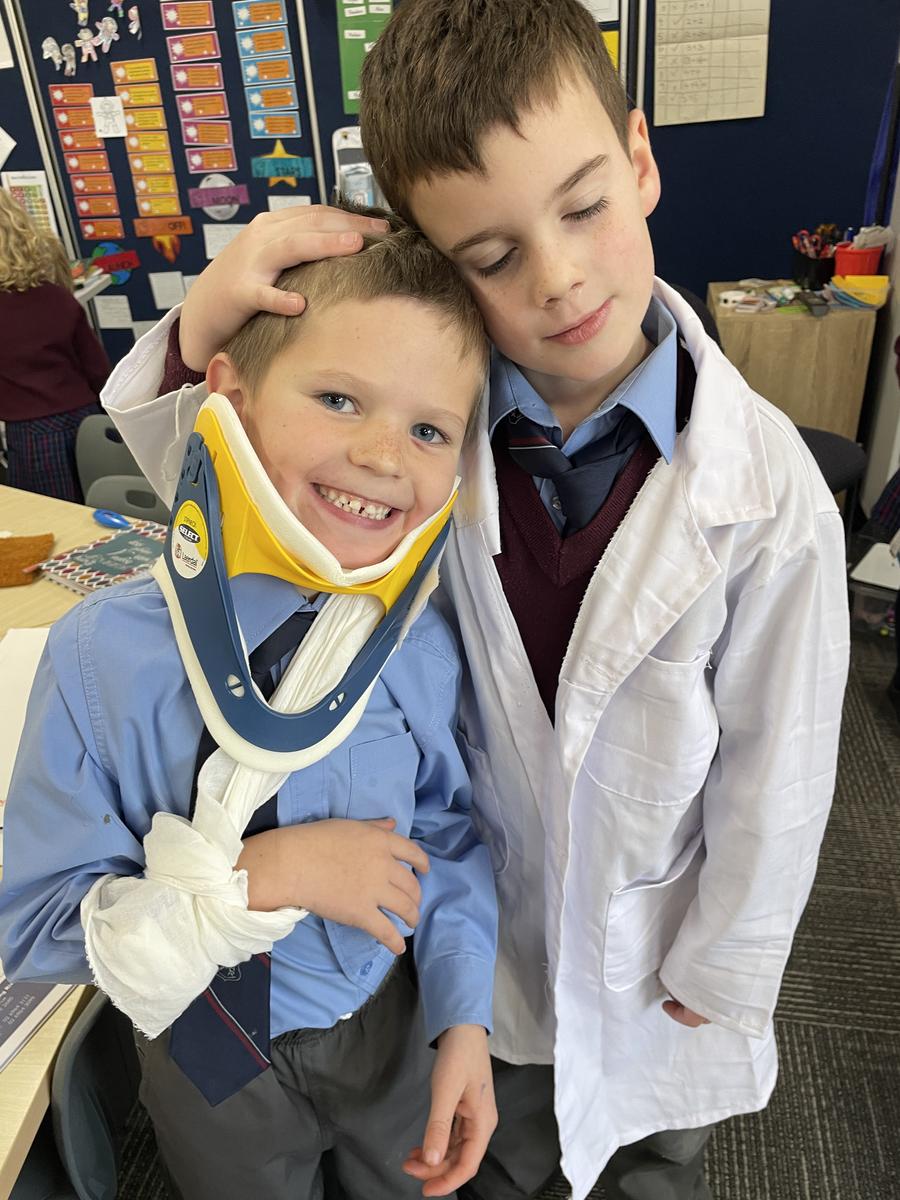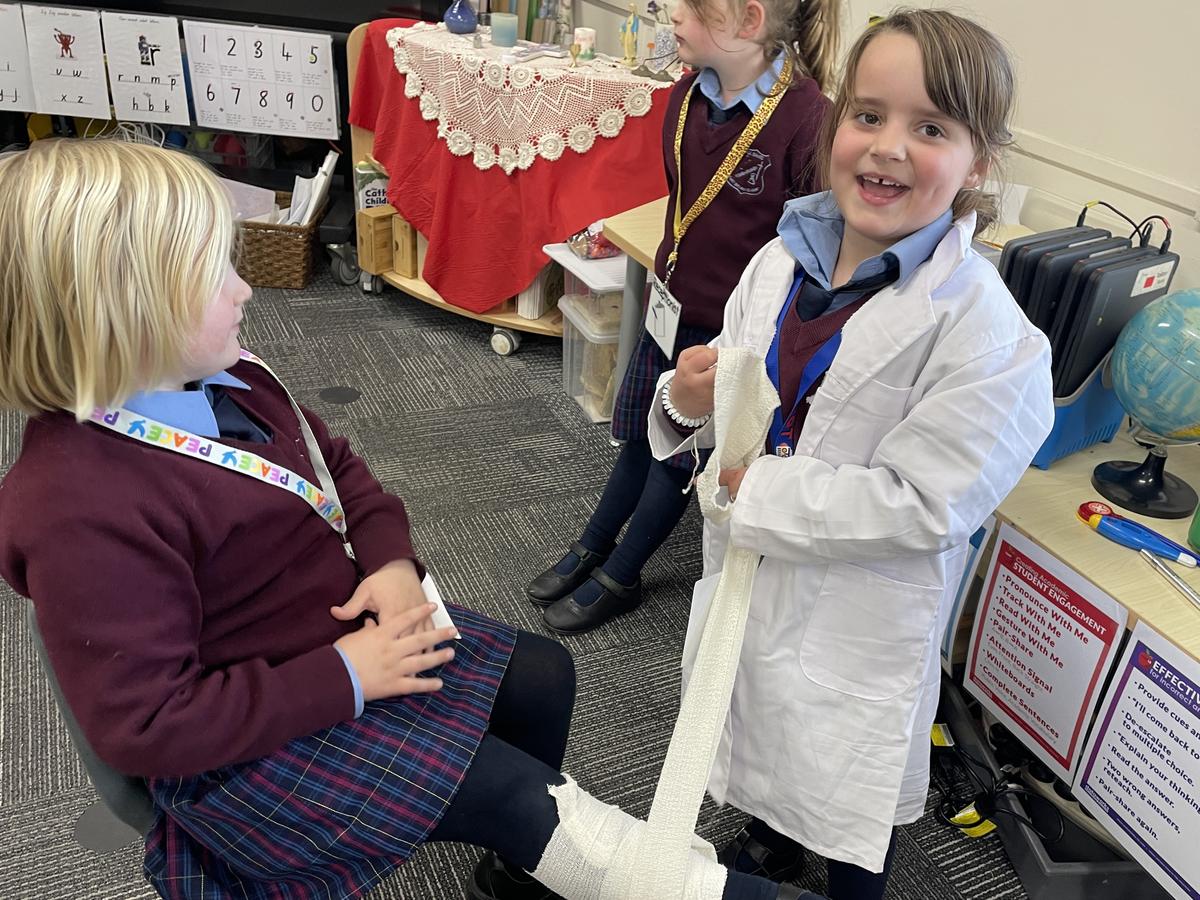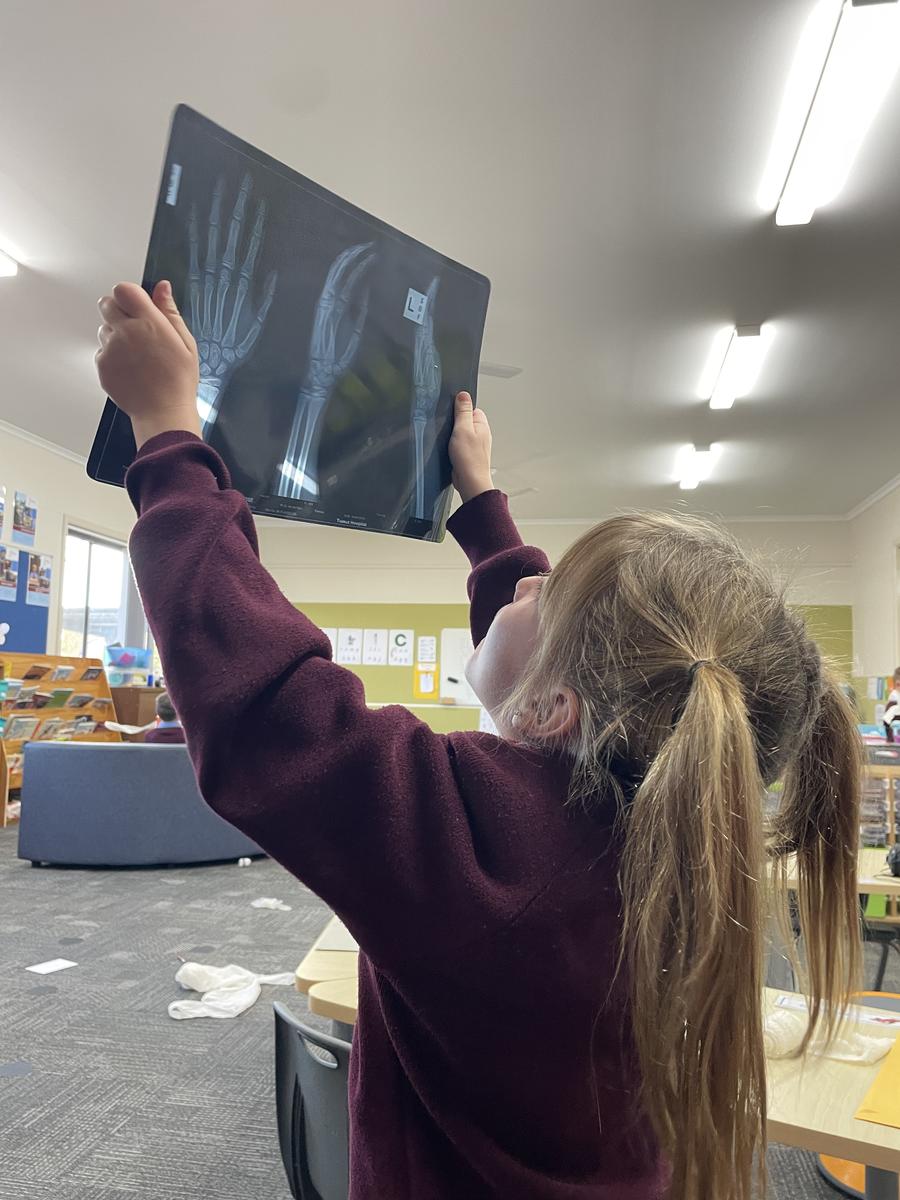Kinder/Year 1

This term, K/1 students have been exploring the elements of drama through imaginative play. They have extended their use of dialogue, explored space creatively, and used props to bring their storytelling to life. A variety of drama games and role-play scenarios have encouraged collaboration and creativity.
One class favourite has been medical play, which became even more exciting when students were given access to real medical props! It has been fascinating to hear how their dialogue skills have developed, adding detail and depth as they re-enact familiar scenarios.
Why not try some role-play at home? Your child might enjoy setting up a café, a vet’s clinic or a post office. We encourage you to take a few minutes to engage in this with your child; it always brings a smile.
CAE-DRA-01: experiments with and identifies ways feelings, ideas, roles and situations are embodied and enacted in drama
CA1-DRA-01: makes and performs drama to embody and enact characters, ideas and stories, and describes ways that drama communicates ideas
Kinder kids are on an exciting mission: to write the whole alphabet from memory! Now that they’ve nailed how to form each letter correctly, they’re challenging themselves to put it all together. That sneaky L-M-N-O-P part is keeping everyone on their toes, but they’re rising to the challenge with smiles and determination. One superstar has already zoomed through and is now tackling capital letters! Seeing so much excitement and pride as our little learners become confident writers is wonderful. Parents, can your child recite the whole alphabet without support? Any time is a great time to practise; in the car, at the shops, or during bedtime routines. Let’s keep the alphabet fun and flowing!
Year One may want to challenge themselves too, and see if they can improve their speed each time they try at home with lower or uppercase letters.
“Alphabet knowledge, particularly the ability to quickly name and write letters, is a strong predictor of later reading and spelling achievement.”
- Adams, M.J. (1990), Beginning to Read: Thinking and Learning about Print
“Rapid and automatic naming of letters is a strong predictor of early reading development.”
- Australian National Inquiry into the Teaching of Literacy, 2005 (The Rowe Report)



